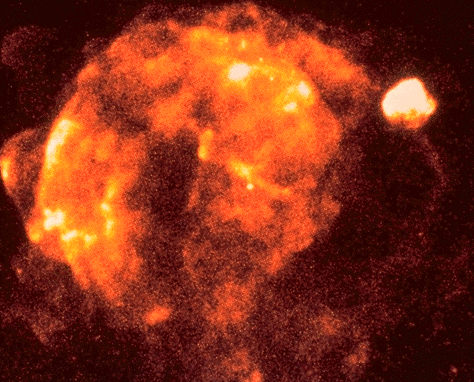Vela Supernova Remnant in X-ray

Explanation:
What happens when a
star explodes? A huge fireball of hot
gas shoots out
in all directions. When this gas slams into the existing
interstellar medium,
it heats up so much it glows in
X-rays. The
above
picture by the
ROSAT satellite has captured some of these X-rays and shown -- for the
first time -- the
Vela supernova
explosion was roughly spherical.
Non-uniformity of the interstellar medium causes Vela's appearance to be
irregular. The size of this X-ray emitting spherical shell is immense -
230 light years across, covering over 100 times the sky-area of the full
Moon. The
supernova
that created this nebula occurred about 1500 light
years away and about 11,000 years ago. Coincidently, a completely different
supernova shell can also be seen in X-rays in this picture! It is visible
as the bright patch near the upper right. This
Puppis supernova remnant nebula is actually about four times further
than the Vela nebula.
Authors & editors:
Robert Nemiroff
(MTU) &
Jerry Bonnell
(USRA)
NASA Web Site Statements, Warnings,
and Disclaimers
NASA Official: Jay Norris.
Specific
rights apply.
A service of:
LHEA at
NASA /
GSFC
& Michigan Tech. U.

